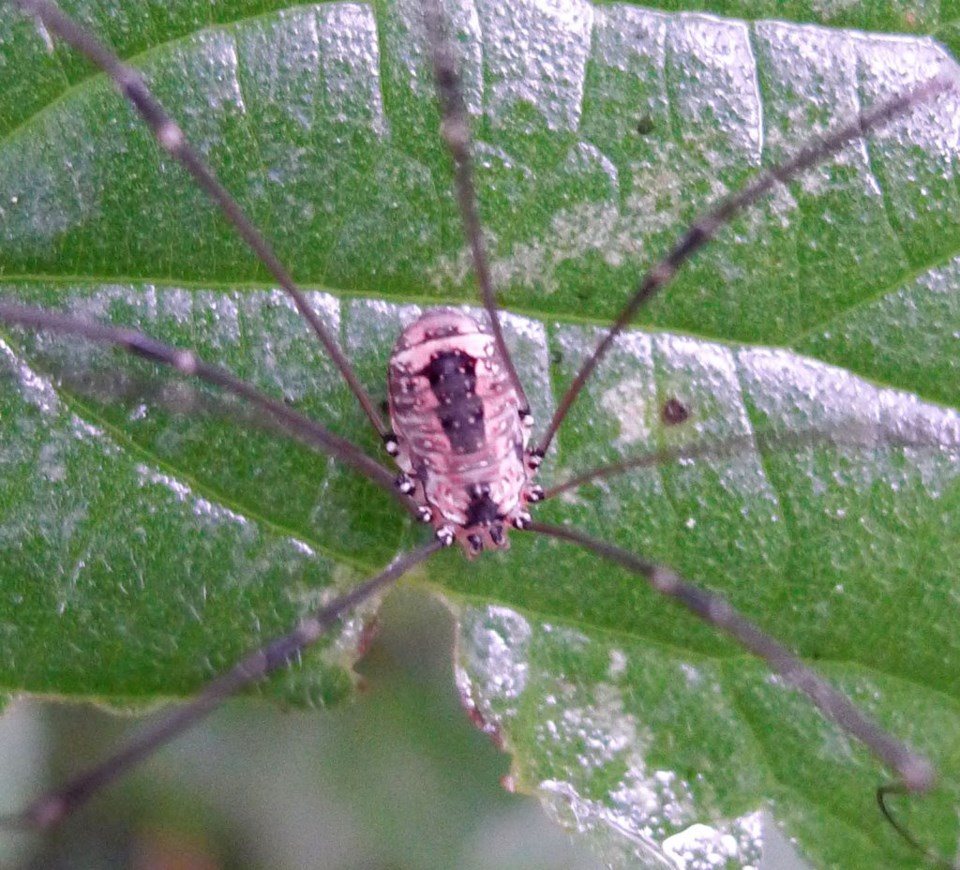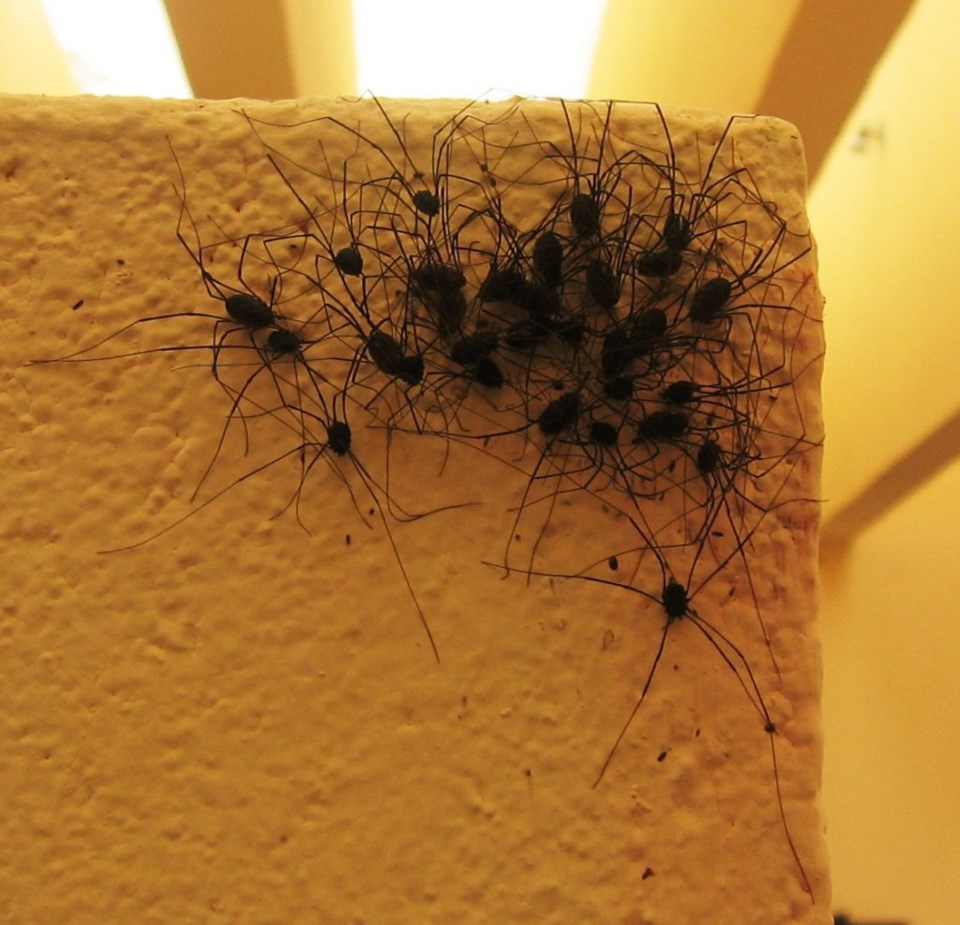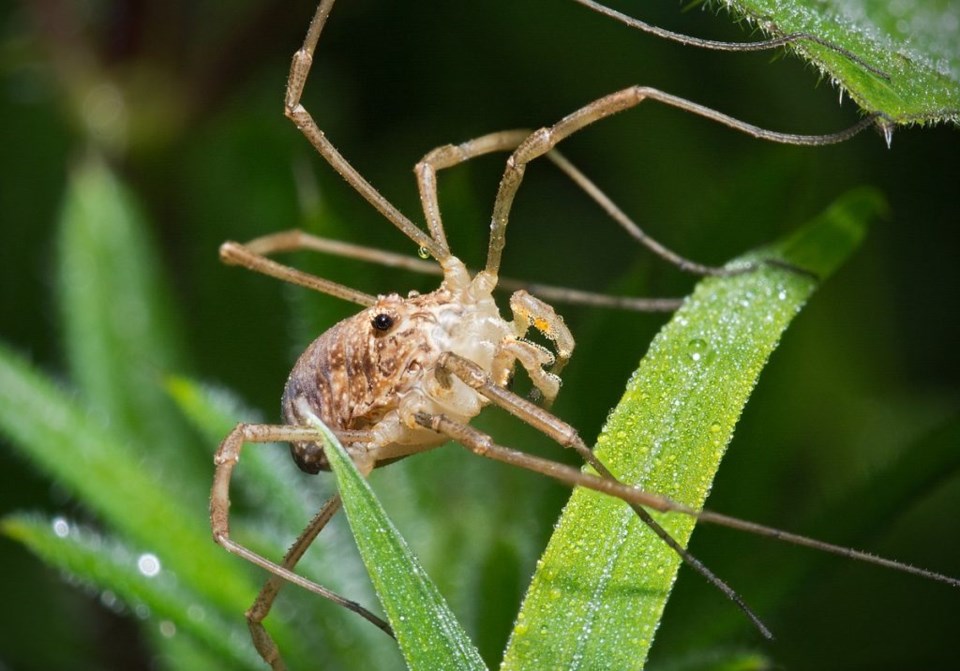This content was originally published by the Longmont Observer and is licensed under a Creative Commons license.
The problem with common names for animals is that they can be used to refer to more than one animal. Such is the case with daddy longlegs. This common name is used to refer to two different types of animals. Although both belong to the class Arachnida, only one is a true spider. That one belongs to the order Araneae and refers to cellar spiders (in the family Pholcidae). They are not the subject of today’s column.
The daddy longlegs most of us think of belong to the order Opiliones and it is not a true spider. Another common name for this animal is the harvestman. Harvestmen are also sometimes called “shepherd spiders” in reference to their long legs. Some European shepherds would use stilts to keep a better eye on their flocks.
There are over 6,500 species of harvestmen worldwide and they can be found everywhere but Antarctica. Although they are often mistaken by people for spiders, they can be distinguished from true spiders by their anatomy.
Unlike true spiders, harvestmen have fused body parts, making it look like they only have one body segment rather than a head portion and back portion separated by a thin segment. Their body shape looks like an oval. In addition, they only have one pair of eyes. They don’t make silk threads like true spiders do. Harvestmen may live up to two years in warmer climates. Some species in Brazil live up to seven years.

Harvestmen live in damp places, usually under objects such as rocks. However, some species have been found in the desert. Generally, you won’t encounter too many of these insects, although on rare occasions they have been known to congregate around eaves and windows. Other favorite places for harvestmen include compost heaps, stone piles, logs, and gardens. Sometimes they will hang out in a big clump of spiders that looks like a pile of hair. You may have seen videos of people poking what they think is a ball of hair, only to have hundreds of spiders scatter everywhere. Some of these videos are of harvestmen. Scientists think they may engage in this behavior when conditions are particularly dry and they need to maintain their body moisture. Another explanation is that by clumping together like this, they decrease the chance that any one particular spider will be eaten by a predator.
Contrary to popular belief, harvestmen are not venomous. They lack venom glands and fangs. Harvestmen primarily eat decomposing plant or animal material. They will hunt opportunistically, however, and will prey on smaller, weaker insects such as aphids or spiders. Harvestmen are creative in their food choices and have been known to also eat bird droppings, fungi and even bread and butter! Harvestmen clean themselves after eating by passing their legs through their jaws.

If disturbed, they may secrete a milky substance that stinks. Their legs can also break off to allow them to escape predators. The leg may continue to twitch after it breaks off because of the “pacemaker” in the lower portion of the leg. It is thought this functions to keep the attention of the predator while the harvestman is escaping. Incidentally, the legs do not grow back. Harvestmen are also known to “play dead” when disturbed by a predator. Due to their camouflaged bodies, this allows them to blend into the leaf litter and most predators simply can’t see them anymore.
Not much is known about reproduction in harvestmen. What scientists do know is that in some species, there are two types of males: alpha males and beta males. The alpha males look different from females somehow, such as having longer legs or glands that females don’t have. Beta males, on the other hand, look just like females. Beta males, or sneaky males as they are also called, don’t make up a very large portion of the population. It is thought that they are able to sneak up on females and mate with them without engaging in competition with larger alpha males. Some species of harvestmen engage in parental care after the eggs are laid. In these cases, it is usually the male that cares for and cleans the eggs until they hatch. Eggs take anywhere from 20 days to six months to hatch.

If you really want to observe harvestmen, you can try turning over rocks or other debris they may be hiding under. However, as always, you should be respectful of the animal when observing wildlife and avoid harassment. The next time you are working in your garden or in the yard, keep an eye out for these gentle creatures.


